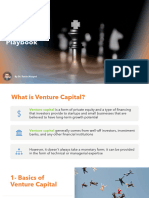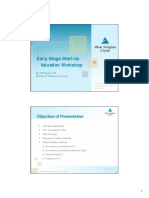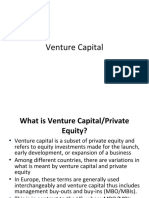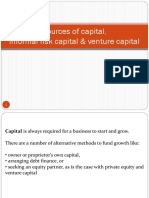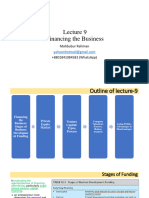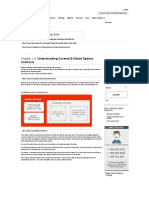0% found this document useful (0 votes)
21 views22 pagesIntro To Venture-Slides
The document provides an introduction to venture funding, covering key concepts such as the spectrum of capital, the venture capital process, company valuation, and the structure of funding rounds. It emphasizes the importance of understanding valuation methods, the impact of dilution on ownership, and the components of a capital table. Additionally, it outlines the roles of different investors and the expectations for returns in venture capital investments.
Uploaded by
makCopyright
© © All Rights Reserved
We take content rights seriously. If you suspect this is your content, claim it here.
Available Formats
Download as PDF, TXT or read online on Scribd
0% found this document useful (0 votes)
21 views22 pagesIntro To Venture-Slides
The document provides an introduction to venture funding, covering key concepts such as the spectrum of capital, the venture capital process, company valuation, and the structure of funding rounds. It emphasizes the importance of understanding valuation methods, the impact of dilution on ownership, and the components of a capital table. Additionally, it outlines the roles of different investors and the expectations for returns in venture capital investments.
Uploaded by
makCopyright
© © All Rights Reserved
We take content rights seriously. If you suspect this is your content, claim it here.
Available Formats
Download as PDF, TXT or read online on Scribd
/ 22












